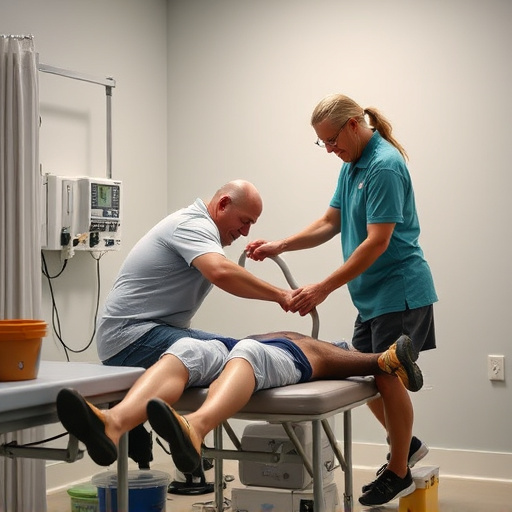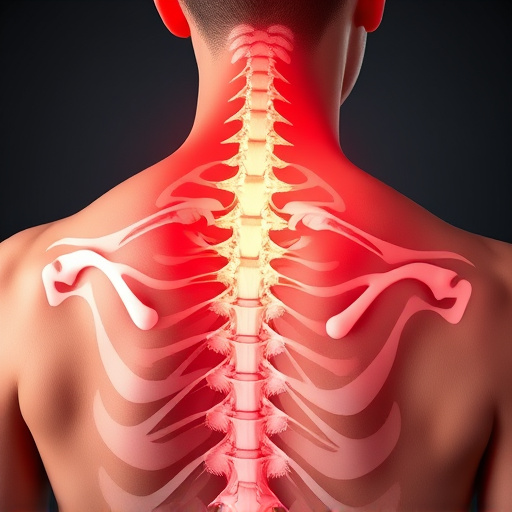Shockwave therapy for pain is a non-invasive treatment option using high-energy acoustic waves to alleviate symptoms of various musculoskeletal conditions like tendonitis, fasciitis, and certain arthritis types. Recommended by chiropractors for herniated discs, it offers minimal side effects, avoids surgery, and provides potential improvements in mobility and quality of life compared to conventional chiropractic care. Understanding temporary discomfort and other possible side effects is crucial before treatment, making provider consultation essential.
“Are you considering shockwave therapy for pain relief? This non-invasive treatment has gained popularity as a game-changer in managing chronic conditions, but its effectiveness varies. In this article, we explore whether shockwave therapy works for everyone. From understanding its benefits and target patients to delving into potential side effects, we provide insights to guide your decision. Learn how this innovative approach can offer relief or if it’s not the right fit for your pain management journey.”
- Understanding Shockwave Therapy for Pain Benefits
- Who Can Benefit from This Non-Invasive Treatment?
- Exploring Side Effects and Risks: What to Expect
Understanding Shockwave Therapy for Pain Benefits

Shockwave therapy for pain has gained significant attention as a non-invasive treatment option for various conditions. This advanced therapy uses high-energy acoustic waves to penetrate deep into tissues, stimulating healing and alleviating pain. One of its key benefits is its ability to promote tissue regeneration, making it an effective herniated disc treatment alternative for many individuals.
The procedure is often recommended by healthcare professionals, including chiropractors, as a safe and efficient way to manage chronic pain. Unlike some traditional treatments, shockwave therapy has minimal side effects and does not require surgery or prolonged recovery periods. It offers a promising solution, especially for those seeking alternatives to conventional chiropractic care, providing relief and potentially improving overall mobility and quality of life.
Who Can Benefit from This Non-Invasive Treatment?

Shockwave therapy for pain is a non-invasive treatment gaining popularity as an effective solution for various musculoskeletal conditions. This innovative approach has shown promise in providing relief to individuals suffering from chronic pain, particularly those who haven’t found success with traditional treatments. Ideal candidates for shockwave therapy include people with conditions such as tendonitis, fasciitis, and certain types of arthritis, often associated with sports injuries or age-related wear and tear.
Rehab services incorporating shockwave therapy offer a personalized treatment plan tailored to each patient’s unique needs. This targeted approach ensures that the benefits of shockwave therapy for pain are optimized while minimizing potential side effects. Unlike surgical interventions, it is generally well-tolerated, making it an attractive option for those seeking alternative solutions for managing chronic pain conditions, especially in the context of a personal injury chiropractic setting.
Exploring Side Effects and Risks: What to Expect

While shockwave therapy for pain has shown promising results for many individuals suffering from various conditions, it’s crucial to explore potential side effects and risks before undergoing treatment. Unlike some surgical procedures, shockwave therapy is non-invasive, using focused acoustic waves to stimulate healing in damaged tissues. However, as with any medical intervention, there can be temporary discomfort, redness, or swelling at the treatment site. In rare cases, patients might experience bruising, numbing, or tingling sensations.
When considering shockwave therapy for joint pain relief or herniated disc treatment, it’s essential to discuss these risks and side effects with your healthcare provider. They can offer guidance tailored to your specific condition and medical history. Additionally, while chiropractic treatment may be an alternative option, shockwave therapy has been shown to provide unique benefits in certain cases, making it a worth exploring avenue for those seeking effective pain management beyond traditional methods.
While shockwave therapy for pain has shown promise across various conditions, it’s not a one-size-fits-all solution. Individual results may vary depending on factors like condition severity, patient age, and overall health. Consulting with a healthcare provider is crucial to determine if this non-invasive treatment is the right choice for managing chronic pain or injuries. Understanding potential side effects and risks will also help patients make an informed decision about their care.














